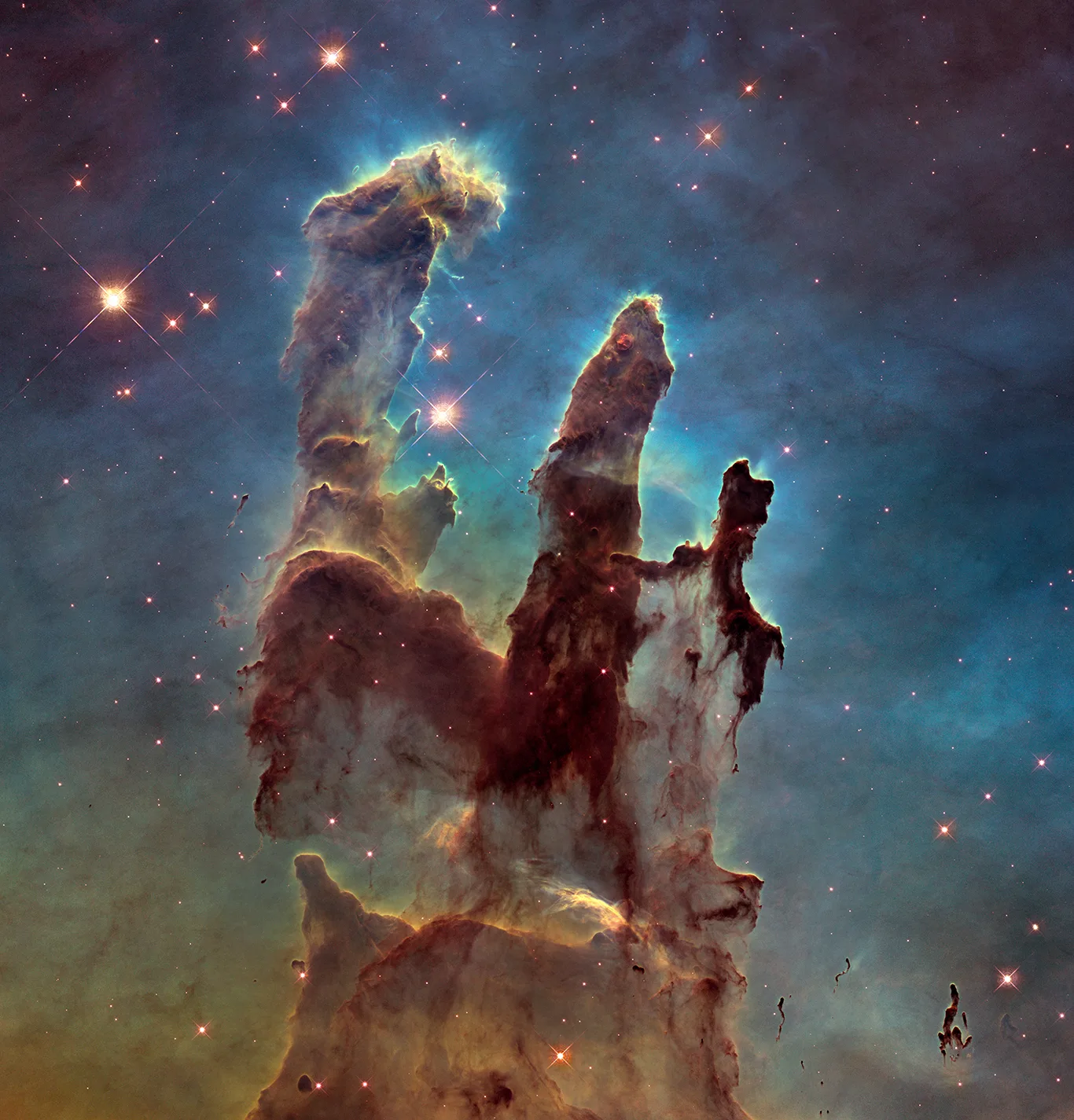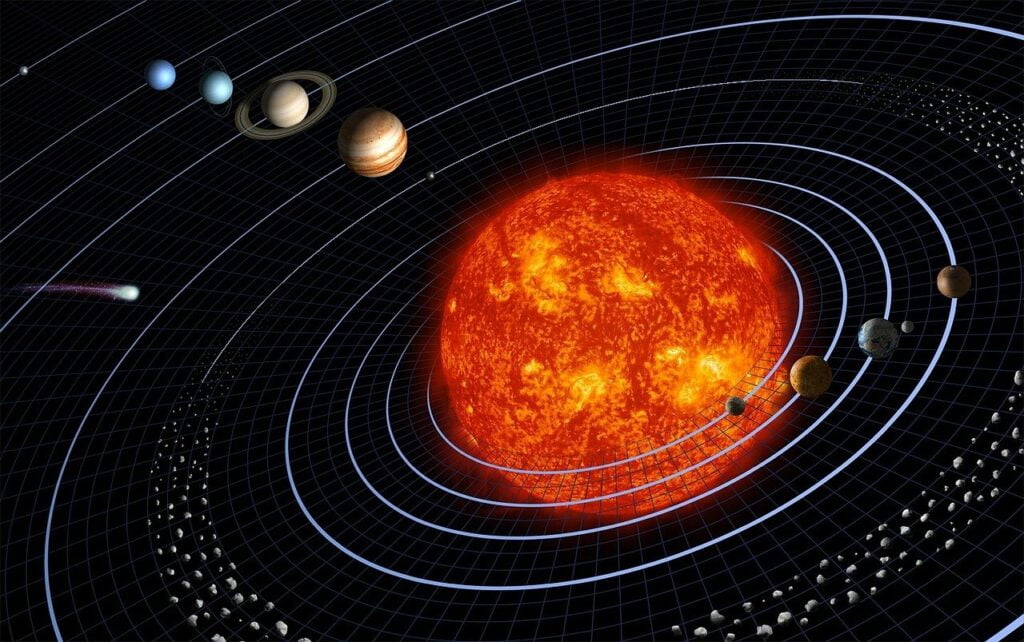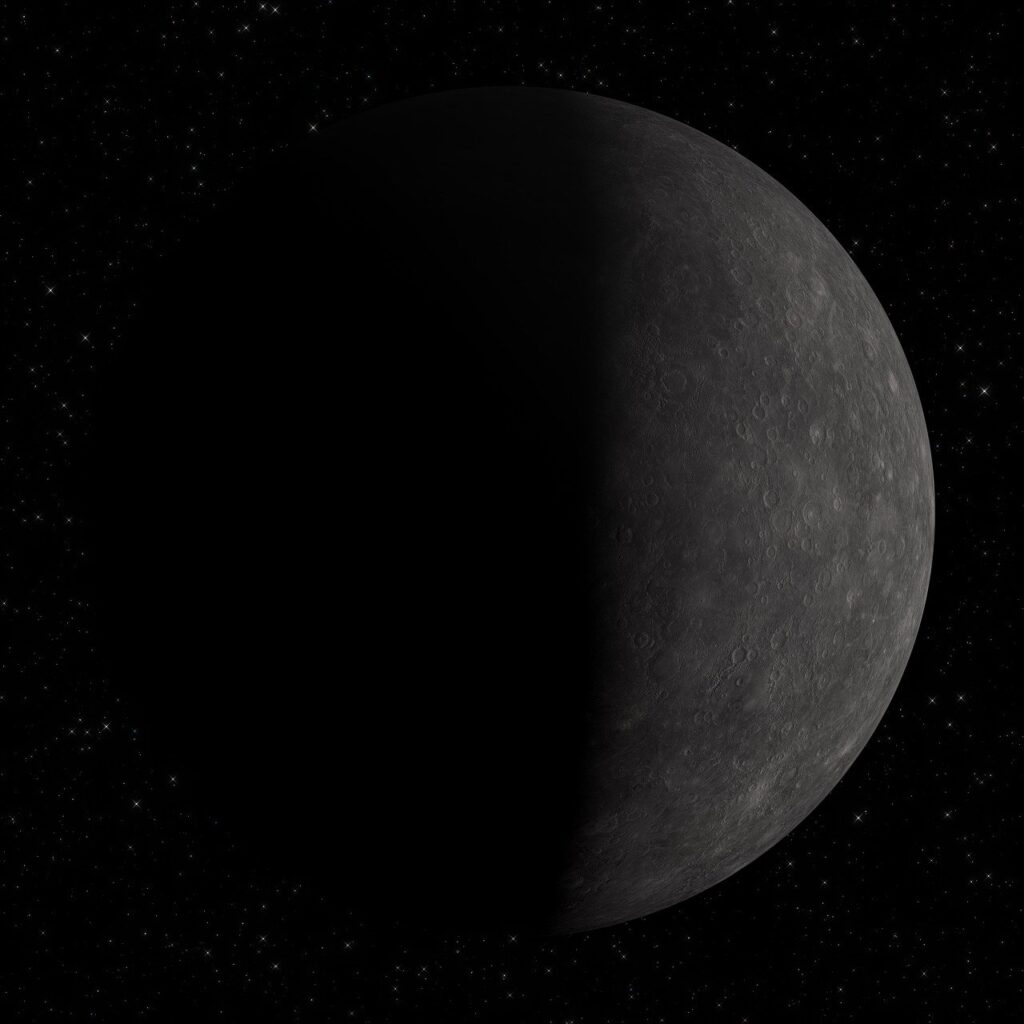
Introduction
Nestled in the constellation Serpens, approximately 7,000 light-years from Earth, lies the Eagle Nebula, a breathtaking spectacle of cosmic grandeur. Officially designated Messier 16 (M16) in Charles Messier’s catalog of celestial objects, this nebula is renowned for its mesmerizing Pillars of Creation, towering columns of gas and dust where new stars are born.
The Eagle Nebula’s discovery can be traced back to the year 1745, when Swiss astronomer Jean-Philippe de Chéseaux observed a cluster of stars within the nebula’s confines. Later, in 1764, German astronomer Charles Messier added the nebula to his catalog, dubbing it M16.
Physical Characteristics of Eagle Nebula
The Eagle Nebula is a vast expanse of interstellar gas and dust, primarily composed of hydrogen (78%), helium (21%), and trace amounts of other elements. This cosmic soup serves as a fertile breeding ground for star formation, as gravitational forces within the nebula’s dense regions pull interstellar material together, initiating the process of stellar birth.
The nebula’s formation can be attributed to the collapse of giant molecular clouds, massive stellar nurseries made up of cold, dense gas. These clouds, typically spanning hundreds of light-years, are the birthplaces of many stars, including our own Sun.
With a physical size of approximately 70 by 55 light-years, the Eagle Nebula is a prominent feature in the night sky. Its brightness, reaching an apparent magnitude of 6, allows amateur astronomers with moderately sized telescopes to observe its intricate details.

NASA, ESA and the Hubble Heritage Team (STScI/AURA)
Star Formation: A Cosmic Drama
Within the Eagle Nebula, star formation is a dynamic and captivating spectacle. The iconic Pillars of Creation, three towering columns of gas and dust, stand as testaments to this celestial drama. These pillars serve as nesting places for newborn stars, harboring nascent stellar cores hidden within their dusty wisps.
The process of star formation is initiated by the interplay of gravitational forces and radiation pressure. As gravity pulls matter together within dense regions of the nebula, the material compresses, increasing its temperature and density. This process triggers nuclear fusion, the lifeblood of stars.
The nascent star, fueled by nuclear fusion, blasts out powerful radiation in all directions. This radiation pressure pushes away surrounding gas and dust, sculpting the stellar nursery and creating the intricate structures we observe in the Eagle Nebula.
The star-formation process unfolds in stages, each marked by distinct characteristics. Protostellar clouds, the first stage, are vast, cold clouds of gas and dust, often shrouded in darkness. As gravity takes hold, these clouds collapse, forming denser regions known as prestellar cores.
Within these prestellar cores, the temperature and density continue to rise, eventually reaching the conditions necessary for nuclear fusion. Once this critical point is reached, a star is born, marking the transition from prestellar core to protostar.
Pillars of Creation: Majestic Sentinels of Star Birth
The Eagle Nebula’s most iconic feature, the Pillars of Creation, are three towering columns of gas and dust, each spanning approximately 4 to 5 light-years in length. These majestic structures, immortalized in Hubble Space Telescope images, stand as testaments to the ongoing drama of star formation within the nebula.
The Pillars are composed primarily of hydrogen gas, with a sprinkling of helium and dust particles. Their intricate shapes arise from a delicate balance between gravitational forces pulling the material together and radiation pressure from nearby stars pushing it outward.
Within the Pillars, new stars are actively forming, hidden within the dusty cocoons of gas. These nascent stars, known as protostars, are fueled by nuclear fusion, releasing energy that heats and illuminates the surrounding gas.
However, the Pillars’ future is uncertain. Some astronomers believe that the intense ultraviolet radiation from nearby massive stars is slowly eroding the Pillars, causing them to dissipate over time. This process, known as photoevaporation, could eventually destroy these magnificent structures.
Despite the potential threat of photoevaporation, the Pillars of Creation remain a captivating symbol of star formation’s enduring power. Their striking beauty and scientific significance have cemented their place as one of the most recognizable and awe-inspiring astronomical landmarks.

NASA, ESA and the Hubble Heritage Team (STScI/AURA)
Beyond the Pillars: A Nebula of Diverse Wonders
The Eagle Nebula is home to a multitude of celestial wonders beyond the iconic Pillars of Creation. Among these notable features are the Cone Nebula, a graceful, cone-shaped structure, and the Horsehead Nebula, a dark cloud reminiscent of a horse’s head.
The Cone Nebula, located to the south of the Pillars, is shaped by the powerful outflow of gas and dust from a young star at its center. This energetic outflow, known as a protostellar jet, carves a cavity in the surrounding nebula, sculpting the intricate cone shape.
The Horsehead Nebula, nestled near the Pillars, is a dark cloud of dust and gas that obscures the light from stars behind it. Its distinctive shape, resembling a horse’s head, emerges when illuminated by the nearby stars.
These diverse features, each with its unique formation and characteristics, contribute to the Eagle Nebula’s remarkable diversity and complexity. They provide astronomers with a wealth of data to study the processes of star formation, gas dynamics, and the evolution of stellar populations.
A Celestial Laboratory: Unveiling the Mysteries of Star Formation
The Eagle Nebula stands as a celestial laboratory, offering astronomers a rare glimpse into the intricate workings of star formation. Its proximity to Earth and its abundance of young stars make it an ideal target for observations and research.
By studying the nebula’s various features, astronomers have gained valuable insights into the processes that govern star birth. They have observed how gravity pulls gas and dust together, how radiation pressure shapes stellar nurseries, and how protostars evolve into mature stars.
The Eagle Nebula has also played a pivotal role in understanding the formation of planetary systems. Observations of disks of dust and gas surrounding young stars have revealed the potential birthplaces of planets, providing clues to the origins of life-supporting worlds.
As astronomers continue to study the Eagle Nebula, they are unlocking new secrets about the universe’s star formation mechanisms and the processes that shape planetary systems. This celestial laboratory is a testament to the vastness, complexity, and interconnectedness of the cosmos, offering us a deeper understanding of our place within it.
Observations and Instruments
Unveiling the Eagle Nebula’s grandeur and intricacies requires sophisticated telescopes and instruments capable of penetrating the nebula’s obscuring dust clouds. Ground-based telescopes, such as the Large Binocular Telescope (LBT) in Arizona and the Very Large Telescope (VLT) in Chile, provide excellent resolution and sensitivity in visible and near-infrared wavelengths. However, these telescopes are limited by the Earth’s atmosphere, which absorbs and distorts certain wavelengths of light.
To overcome these limitations, astronomers turn to space-based observatories, which offer a clear view of the nebula without atmospheric interference. The Hubble Space Telescope (HST) has played a pivotal role in studying the Eagle Nebula, capturing breathtaking images of the Pillars of Creation and other nebular features. HST’s ultraviolet and infrared capabilities have enabled detailed studies of the nebula’s gas and dust distribution, revealing the presence of newborn stars and the intricate processes of star formation.
More recently, NASA’s James Webb Space Telescope (JWST) has entered the scene, providing even sharper and more detailed observations of the Eagle Nebula. With its infrared capabilities, JWST can peer deeper into the nebula’s heart, revealing previously hidden objects and processes. This wealth of data is expected to revolutionize our understanding of star formation and nebular dynamics.

Image courtesy of Stellarium
Future Directions
The study of the Eagle Nebula is far from over. Ongoing research aims to:
- Unravel the fate of the Pillars of Creation, determining whether they are indeed being eroded by ultraviolet radiation and whether they will collapse into new stars.
- Characterize the composition and formation of the nebula’s molecular clouds, the raw material for star formation.
- Study the formation and evolution of young stars and protoplanetary disks within the nebula.
New technologies and telescopes are poised to unlock even more secrets from the Eagle Nebula. The European Extremely Large Telescope (ELT) under construction in Chile is expected to provide even higher resolution and sensitivity in visible and infrared wavelengths, offering a deeper glimpse into the nebula’s intricate structure and dynamics.
The Square Kilometer Array (SKA), a global network of radio telescopes, will open up a new window into the nebula’s realm, revealing fainter objects and processes that are invisible to optical telescopes.
These advancements promise to transform our understanding of star formation and the processes that create the birthplaces of new stars and planetary systems.
Conclusion
The Eagle Nebula stands as a beacon of stellar birth, a testament to the universe’s ceaseless creativity. Through relentless study and the use of ever-more sophisticated instruments, we are gaining a deeper appreciation of this awe-inspiring cosmic nursery. The Eagle Nebula remains an enduring source of inspiration and scientific inquiry, revealing the grand tapestry of star formation and the profound mysteries that lie within.
You may also like
Mercury: The Closest Planet to the Sun
Venus: The Earth’s Twin or a Very Different Planet?
Mars: Comprehensive Exploration, unveiling the Mysteries
Jupiter: A Cosmic Giant – Symphony of Storms
Saturn: A Gaseous Giant with Enthralling Rings and Diverse Moons
Useful links
European Space Agency (ESA): https://www.esa.int/ESA_Multimedia/Images/2005/04/Eagle_Nebula_M16
Canadian Space Agency (CSA): https://www.asc-csa.gc.ca/eng/satellites/jwst/
National Aeronautics and Space Administration (NASA): https://science.nasa.gov/mission/hubble/science/explore-the-night-sky/hubble-messier-catalog/messier-16/
Photos from https://science.nasa.gov/mission/hubble/science/explore-the-night-sky/hubble-messier-catalog/messier-16/


